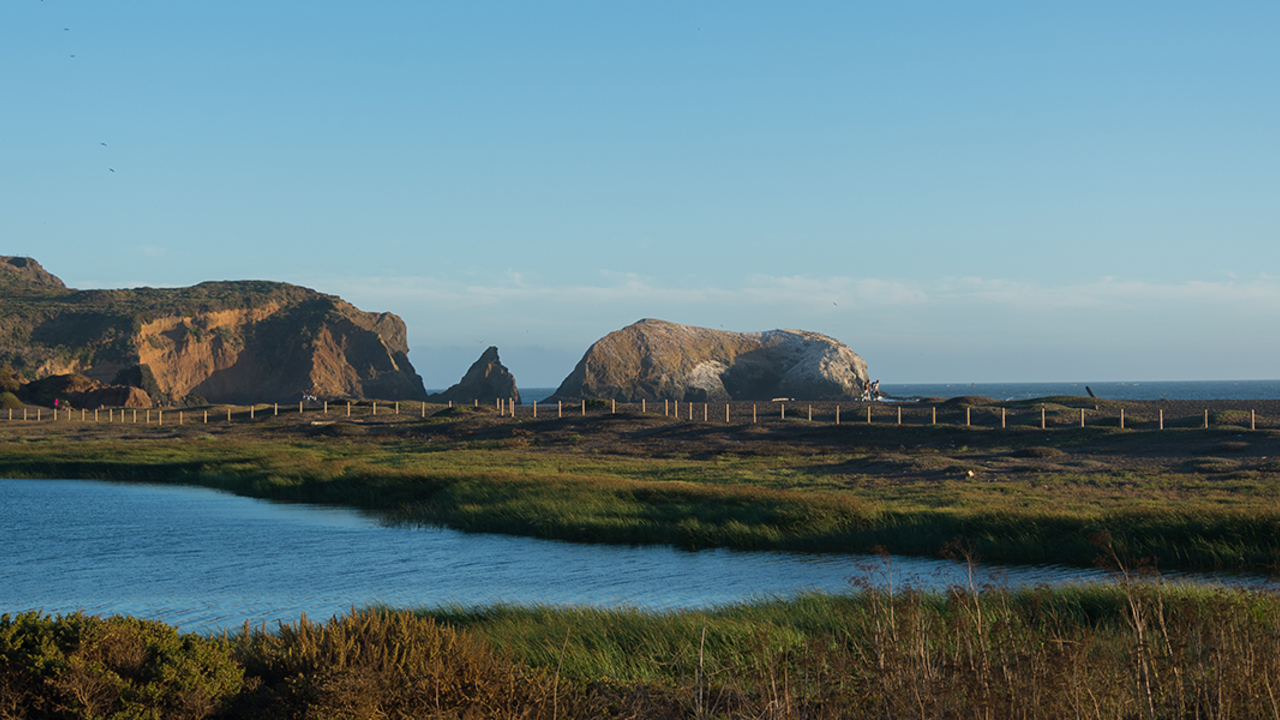Wave of Change at Rodeo Beach

Alison Taggart-Barone/Parks Conservancy
The roadwork in Rodeo Valley will soon be completed, giving rise to three miles of smooth pavement that leads right to a brand-new wetland restoration site next to Rodeo Beach. The area had always been a natural wetland (now encircled by the Old Bunker Road Trail), but years of human use changed the landscape.
Once a dairy farm, then an Army parade ground, and recently a dusty overflow parking area, grading and earthwork done in October has reshaped the site in a way that harkens back to its original/natural contour. This winter the thousands of plants grown at the Marin Headlands Nursery will gradually transform the area into a haven for wildlife. Here are a couple of highlighted native species.
Small-fruited Bulrush (Scirpus microcarpus)
When you hike up the Coastal Trail to Battery Townsley and look down into the valley, the majority of the vibrant green vegetation you see is small-fruited bulrush. For the extension of the wetland, the Marin Headlands nursery is growing over 15,000 of these plants, and another nursery is growing an additional 23,500 plugs, planted into sod-like mats.
The growing plants will help to stabilize the dynamic soil structure with their thick roots, and will withstand fluctuating water levels as the wetland stabilizes. Once established, these plants will provide many services to wildlife: songbirds use its long leaves and large blooms for nesting material, large water birds eat the tender shoots and roots, snakes and amphibians find cover in the dense vegetation, and foxes slink through unseen to their watering holes.
Coastal Hedgenettle (Stachys chamissonis) (image above)
We love the showy violet blooms on these plants, and so do the hummingbirds! If you have noticed the purple glow over this or any other Marin Headlands marsh in July and August each year, you’ve probably seen this species. In addition to hummingbirds, hedgenettle supports a huge diversity of pollinators, and its seeds feed many birds and small mammals. Even more so than bulrush, this species forms tangled, soil-stabilizing matrices of roots, shooting up and spreading much like a runaway mint plant in your garden (though it’s always welcome!).
For more information and to help give these plants a great start, come to the Marin Headlands Nursery on Saturdays from 9 am–noon or Wednesdays 1–4 pm, on your way to check out the evolving wetland…and, of course, the beach!